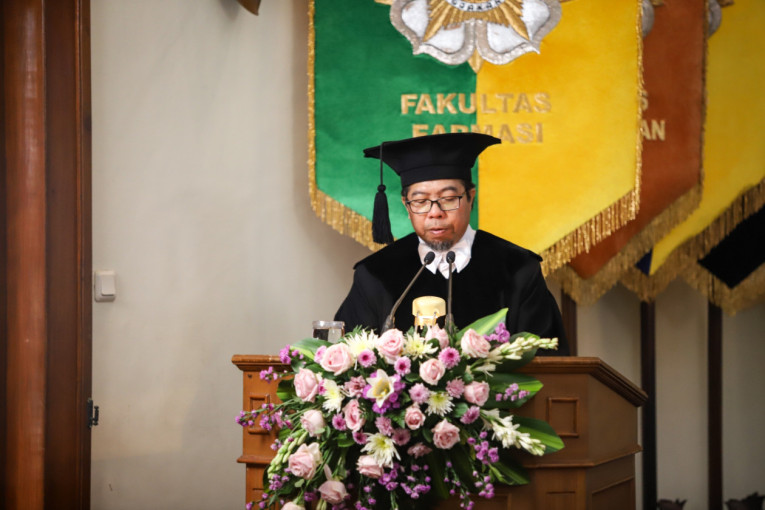
Despite efforts, Indonesia still faces challenges in the availability of pharmaceutical products, particularly innovative drugs, which are predominantly imported. One of the reasons is the limited pharmaceutical industry that produces research-based drugs, even though the government has intervened in regulations.
“Indonesia’s pharmaceutical industry mostly focuses on formulating and packaging drugs rather than producing research-based drugs,” explained professor of pharmacology and toxicology at the Faculty of Pharmacy, Universitas Gadjah Mada (UGM), Arief Nurrochmad.
He shed light on this issue during his inauguration speech, “The Role of Pharmacology and Toxicology in the Development of New Drugs: A New Perspective on the Use of Big Data and Pharmacological Networks,” on Tuesday (February 6) at the UGM Senate Hall.
Professor Nurrochmad emphasized the need for research-based drug production to ensure drug availability. However, he noted that developing new drugs is a lengthy and costly process.
“The development of new drugs, from initial ideas to product launches, is a complex process, taking 12–15 years and costing more than 1 billion USD,” he mentioned.
Initially, therapeutic drug targets must be identified using traditional experimental methods. Then, structural biologists emerged to elucidate the three-dimensional (3D) structure and ligand binding characteristics to reveal whether this is feasible as a new drug target.
Subsequently, medicinal chemists and pharmacologists use high-throughput screening to discover several highly effective lead compounds for further safety assessments and clinical trials.
Overall, he continued, these procedures are expensive and tedious. In 2018, a study by Moore et al., 2008 found that the average cost of efficacy testing for 59 new drugs approved by the FDA during 2015–2016 was 19 million USD.
Therefore, methods are needed to overcome the limitations of conventional drug discovery procedures by introducing more efficient, low-cost, and computational-based methods.
“Compared to traditional drug discovery methods, rational drug design, using computer-aided drug design methods, has been proven more efficient and economical,” he argued.
Rational drug design integrates molecular docking into the ligand-binding pocket of promising therapeutic targets, calculating the binding energy of each small molecule compound. Additionally, it selects the best candidates to enter the next stage of experimental procedures.
Research by Ferreira et al., 2015 noted that more than 100,000 3D protein structures are currently stored in the Protein Data Bank (PDB) for molecular docking. Unlike traditional methods, rational drug design has increased the hit screening rate by more than 100 times.
Professor Nurrochmad stressed the importance of leveraging advancements in science and technology, particularly in pharmacology and toxicology, to expedite drug discovery and development. Enhanced drug candidate design during the experimental phase reduces the likelihood of failures in subsequent stages, notably in costly clinical trials.
In light of the COVID-19 pandemic, Professor Nurrochmad underscored the urgency of exploring new, effective, and affordable drug discovery methods. He highlighted the potential of Artificial Intelligence (AI) and big data to revolutionize drug target discovery by swiftly analyzing vast amounts of data.
“The rapid evolution of big data and AI offers unprecedented opportunities to accelerate drug target discovery,” he concluded.
Author: Ika
Photographer: Donnie

